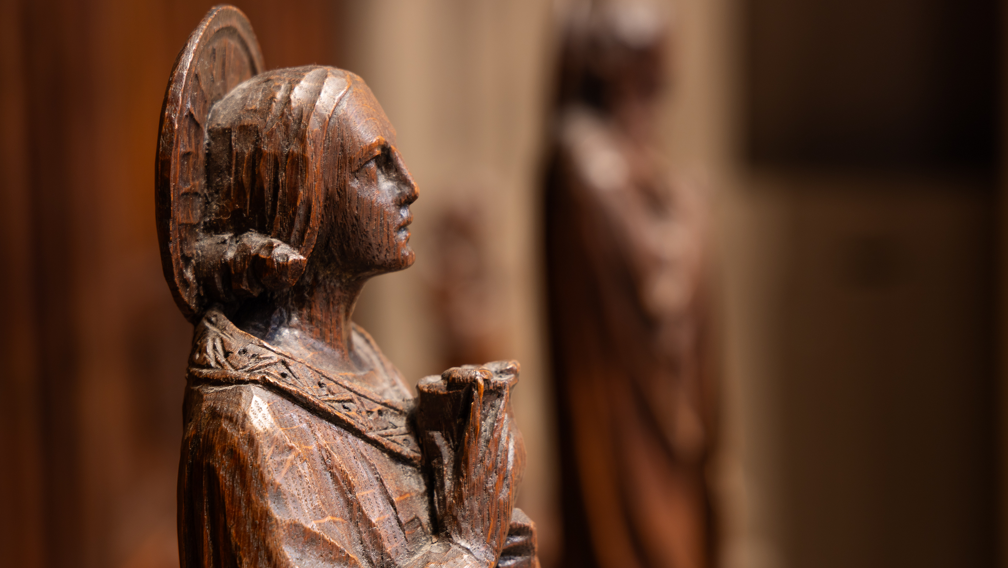“Jesus said, ‘Just as Moses lifted up the serpent in the wilderness, so must the Son of Man be lifted up, that whoever believes in him may have eternal life. For God so loved the world that he gave his only Son, so that everyone who believes in him may not perish but may have eternal life.’” — John 3:14–16
A Look Ahead to Sunday’s Readings
From coffee mugs to tattoos to roadside church signs, John 3:16 seems to be everywhere. It’s well-known because it gets right to the heart of the matter: The God who created all things has come into the creation itself in the form of a single man. And anyone who comes to this man — this Jesus of Nazareth — finds themselves in an eternal relationship with God.
But the verse before John 3:16 is less well known.
When Jesus says Moses lifted up the serpent in the wilderness — and that he too must be lifted up — we might wonder what Jesus means. Why is Jesus comparing himself to a snake, and what does this have to do with eternal life?
The key to this passage lies way back in the Book of Numbers, a book Jesus knew well. He had studied the story of his people’s rescue from slavery in Egypt and knew about their long, frustrating journey to the promised land. They had seen miracle after miracle — God parting the sea for them to walk on dry land out of bondage, the swift defeat of Pharaoh’s army, food from heaven along the way — yet in their restlessness they couldn’t trust in God’s providence. Why have you brought us up out of Egypt to die in the wilderness? they complained. We don’t like the food here, we abhor this wandering, and we fear our growing uncertainty about the future. In response, God sends venomous snakes among them and many die.
This response prompts hasty repentance. The people ask for lenience, and God tells Moses to place a bronze snake on a pole high above the trembling crowds. Whoever was then bitten by a serpent could look at the bronze snake and live. The snake functions as both the arbiter of punishment and the vehicle through which healing can occur.
In such a context, we can see why Jesus compares himself to this snake. While death and judgment are part of our world, Jesus is like the snake of healing, lifted up above the unfaithful masses. God is again asking for us to trust that, despite the wilderness around us, our deliverance is at hand. The promised land of eternal life is before us.
Jesus’s place on the pole of death, the brutal cross of Roman crucifixion, is thus infused with cosmic purpose. Punishment and pain — indeed, death itself — are overcome in his dying. For just as a snake sloughs off its skin, Jesus is resurrected to new life. The wilderness season of life is overcome, and the season of Easter can begin.
Read all of Sunday’s scriptures.
Here are five ways to think about what it means to trust in God’s deliverance during wilderness seasons:
Theology What does “eternal life” mean, anyway? Theologian Craig Keener unpacks the Gospel of John’s distinctive understanding of the phrase.
Visual Art In a dramatic scene, 17th-century Flemish painter Anthony Van Dyck depicts Moses with the snake in the wilderness, just before the people are healed from its powers.
Music John 3:16 is chanted during a Lessons and Carols service at Christ Church St Laurence, an Anglican parish in Sydney.
Poetry In “The Black Snake,” prize-winning poet Mary Oliver asks us to consider the snake who “says to oblivion: not me!” in an everyday encounter that hints at resurrection.
Social Justice Minister Raj Bharat Patta reflects on the politics of love in John 3:16, noting our tendency to over-emphasize the power of the believer in a way that diminishes “the strength of God’s unconditional grace.” He writes, “John 3:16 is a eucharistic space that reveals God’s love for the world as abundant and exceeding, reflected in God giving up God’s son for the world, all for the sake of love and life.”
Subscribe for Trinity Updates
Get information about Trinity Church Wall Street and our latest programming.
